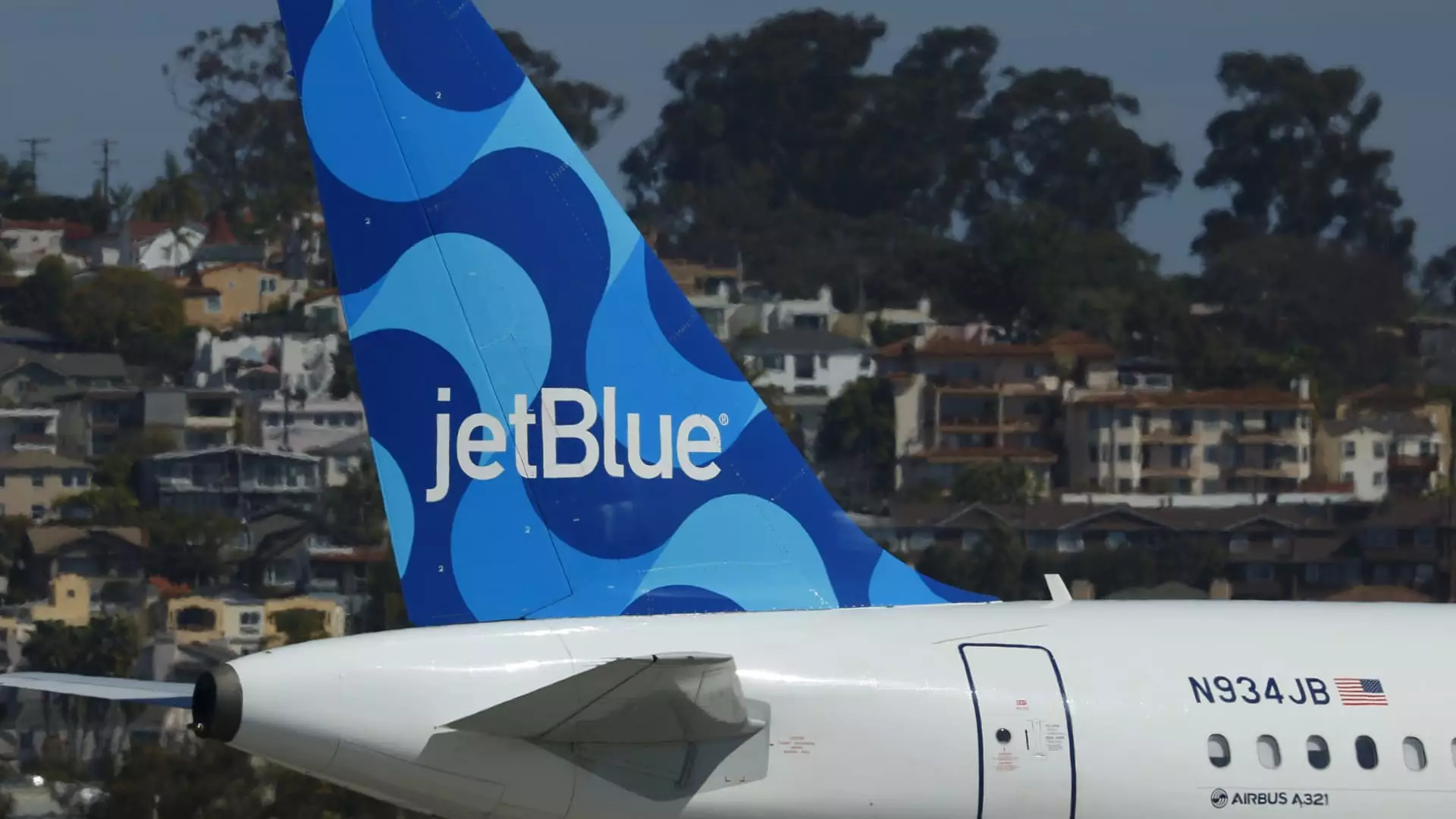In an unsettling revelation that underscores the fragile state of the airline industry, JetBlue Airways CEO Joanna Geraghty informed employees of a series of aggressive cost-cutting strategies. With travel demand failing to meet expectations, achieving break-even operation margins for the year now appears to be a distant dream. Geraghty’s frank message to her staff not only reflects an immediate concern but also signals a broader crisis within the aviation sector that has been exacerbated by economic headwinds.
As we peer into this situation, it’s essential to understand the tides of change that airlines face today. Travel demand has weakened, leading to a series of capacity reductions among U.S. carriers, particularly as we move into the latter half of the year. It is concerning to note that airfare for May plunged by an astonishing 7.3% compared to the previous year, a clear reflection of a sinking market. JetBlue and its competitors have been forced to retract their forecasts for 2025, demonstrating an unfortunate reliance on borrowed capital just to keep the airlines afloat.
The Impact of Regulatory Setbacks
JetBlue’s misfortunes were compounded by significant regulatory obstacles that have stymied its expansion. The failed acquisition of Spirit Airlines last year, alongside the thwarted Northeast U.S. alliance with American Airlines in 2023, illustrates how external factors can dramatically affect an airline’s prospects. These blockades have left JetBlue scrambling for new avenues of revenue generation and cost containment. Such challenges raise questions about the future viability of JetBlue as it struggles to maneuver through a landscape rife with uncertainty.
As noted in Geraghty’s memo, the airline is taking definitive steps to trim services by cutting off-peak flights and eliminating unprofitable routes. This kind of reactive strategy can often create a vicious cycle—reducing capacity and options just when consumers might need them the most. It’s a short-term fix that risks long-term viability. In an era of evolving consumer behavior and expectations, the airline must rethink its approach to stay relevant.
Investments in Premium Services Amidst Challenges
Despite these trials, JetBlue has not completely turned its back on innovation. Geraghty’s message also highlighted the airline’s commitment to investing in premium-class seats and airport lounges to attract higher-paying customers. While these initiatives are commendable and necessary, there’s an inherent irony in trying to upscale offerings when basic operations are struggling to remain solvent.
JetBlue’s assertion that these premium features are “the building blocks of a stronger JetBlue” raises valid questions. Can the airline truly afford these ventures while simultaneously trying to navigate its precarious financial state? It almost seems contradictory to focus on luxury service enhancements at a time when the fundamental business model is under threat. Perhaps the emphasis should instead be placed on operational efficiency and customer satisfaction based on reliability rather than splurge.
Staffing Challenges and Strategic Partnerships
Geraghty’s acknowledgment of hiring plans and staffing adjustments hints at another layer of complexity facing JetBlue. While the company continues to recruit frontline employees, it is reportedly considering combining leadership roles and curtailing travel expenditures. It raises a potential concern, however, about whether a leaner management structure could jeopardize operational oversight, especially during tumultuous periods.
Moreover, JetBlue’s new partnership with United Airlines comes as a strategic lifeline, permitting customers to book flights on each other’s platforms and earn frequent flyer miles across both airlines. While this collaboration may provide immediate customer connectivity, it will be imperative for JetBlue to analyze how such alliances can be leveraged without diluting its brand integrity.
In a landscape teeming with unpredictability, JetBlue’s fate teeters on a precarious edge, caught between the necessity of immediate survival and the longing for future growth. While the airline extends its hand towards cost-cutting and innovative partnerships, it must ground its strategies in a foundation that safeguards employees, maintains a commitment to customer experiences, and paves the way for a sustainable future in an industry undergoing seismic shifts.

